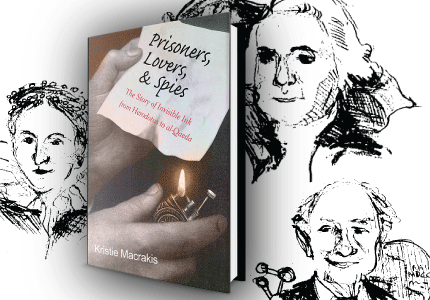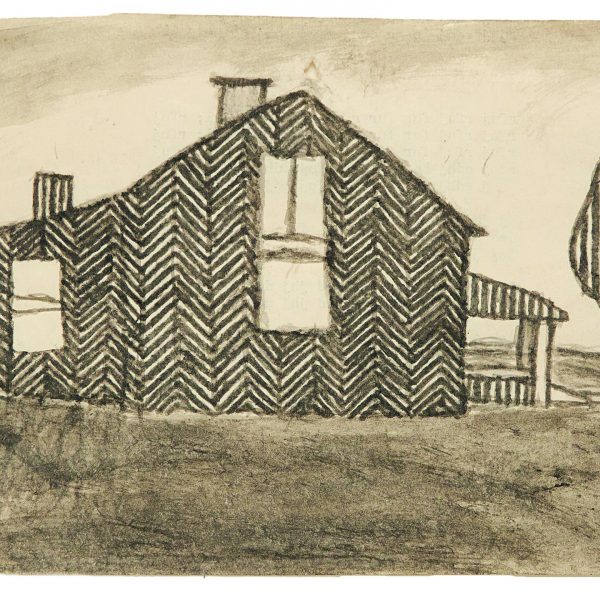Q&A With Kristie Macrakis, Author of Prisoners, Lovers, and Spies
Prisoners, Lovers, and Spies: The Story of Invisible Ink from Herodotus to al-Qaeda is a book about concealing and revealing secret communications. It is the first history of invisible writing, uncovered through stories about scoundrels and heroes. Spies were imprisoned or murdered, adultery unmasked, and battles lost because of faulty or intercepted secret communications. Yet, successfully hidden writing helped save lives, win battles, and ensure privacy. Yale University Press sat down with author Kristie Macrakis to talk about the spy wars, chemical discoveries, and famous characters that make up this hidden history.
Yale University Press:What inspired your research into the history of hidden writing?
Kristie Macrakis: It was precisely the hidden nature of the subject that inspired my research. It all began with a quest to uncover the Stasi’s (East German secret police and intelligence agency) secret writing methods in order to better understand the United States’ secret methods.
After spending considerable time probing secret writing files I finally hit pay dirt. I was handed a top secret Stasi Cold War invisible ink formula from the 1970s and successfully reproduced it. It was so exciting that my heart started pumping like that of a kid who just stole a candybar. When I was slated to deliver a lecture on invisible ink, I discovered no single book had been written about the subject though there were dozens about codes and ciphers.
The book grew out of that discovery, was research out of curiosity, and was written because of a need. It is the book I wish I had found on the shelf.
YUP: What is your all-time favorite story about invisible ink?
KM: It depends on my mood, but I’m particularly fond of the Nazi tooth spy story. I’ve just written a blog about it, but to make a long story short, a Nazi spy parachuted into England with secret ink hidden in his molar. It’s a good story, but it is just one example of many about the fascinating and bizarre ways in which people concealed their secret ink materials.
YUP: Do you reveal any previously secret hidden writing techniques or stories in Prisoners, Lovers, and Spies?
KM: The whole book is filled with secrets that have never been told before! It’s suitable for anyone who loves a secret. It started with the discovery of the Stasi secret writing method and goes backward from there. While some readers may have heard that General George Washington used sympathetic ink, not many know that the Nobel-prize winning discoverer of Vitamin C, Linus Pauling invented ingenious secret ink methods during World War II. He went to his grave with the secret revealed here for the first time. Of course, I can’t reveal all of them here!
YUP: Did hidden writing ever change the course of history?
KM: Probably one of the most changing the course of history events happened thousands of years ago in ancient Greece and shaped the future of Western civilization. It involved Demaratus’s (a Spartan exiled in Persia) warning of surprise attack by Xerxes, king of Persia, written on a blank wax tablet. How many changing the course of history events happened after that is up for debate. Hidden messages save lives, win battles, ensure privacy, and occasionally change the course of history.
YUP: Do advances in hidden writing reflect changes in the way we wage war today? Is it possible to identify causal relationships between changes in hidden writing and changes in warfare?
KM: It’s not necessarily changes in warfare that reflect advancements in secret writing, but changes in society and technology in general. For example, one could say that digital steganography (or digital hidden writing on the internet or in digital images) is the modern technological sophisticated reincarnation of invisible inks like lemon juice, highly sophisticated chemical combinations or better yet, ancient seemingly blank wax tablets. Stego came about because of new sophisticated digital techniques. Generals and foot soldiers then use the most effective way to communicate available. As a result, you’d be more likely to see a CIA spy propped up against a tree trunk with a laptop encrypting messages and sending them through an image jpeg rather than mixing chemicals. However, don’t forget, you can always use old-fashioned invisible ink in a pinch. If a spy is holed up in an al-Qaeda prison, he or she might only have urine – or he, semen – to write with.
YUP: In the book you show that during WW I there was kind of an arms race to develop new invisible inks. In the absence of such an open global war do you think hidden writing will stagnate?
 KM: Yes, there was an arms race or see saw battle of wits as each side responded to more sophisticated invisible ink methods. The same thing could happen in modern warfare. For example, the NSA’s perceived enemies might have figured out how the NSA spies on its communications so it will develop other ways to communicate. When it does this, the NSA will respond with new communication methods. Sometimes the warfare context stimulates scientific or technical change.
KM: Yes, there was an arms race or see saw battle of wits as each side responded to more sophisticated invisible ink methods. The same thing could happen in modern warfare. For example, the NSA’s perceived enemies might have figured out how the NSA spies on its communications so it will develop other ways to communicate. When it does this, the NSA will respond with new communication methods. Sometimes the warfare context stimulates scientific or technical change.
Kristie Macrakis is professor of history, technology, and society at the Georgia Institute of Technology. She is a historian of science as well as espionage and the author of numerous books and articles, including Seduced by Secrets. She lives in Atlanta, GA. Visit her website at www.kristiemacrakis.com.




























